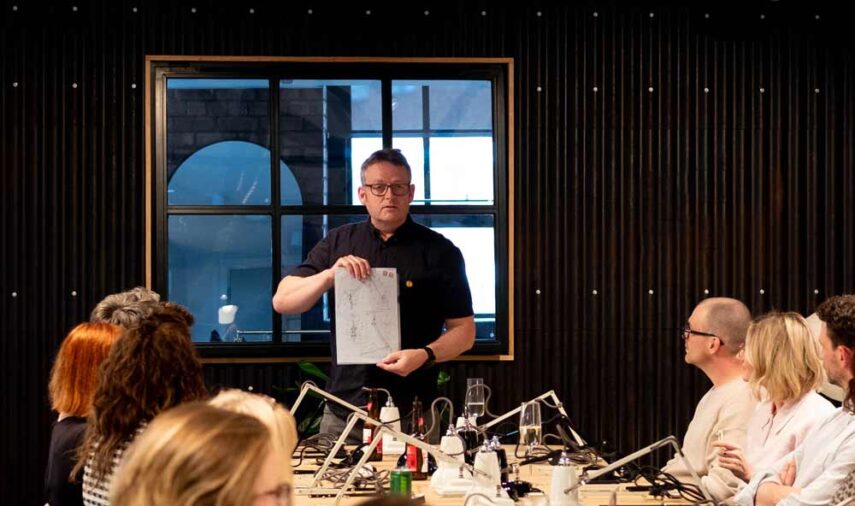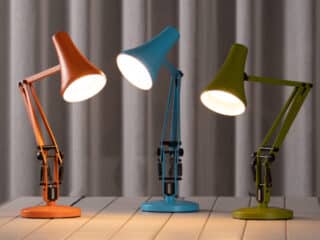News
One object for life

I’m not usually up on TikTok trends… but there’s one recently I’ve found pretty shocking.
It’s called stooping. And it’s definitely a new low.
Every day across New York City, hundreds of precious items are thrown out of brownstones onto the Upper East Side pavements.
People are chucking them out for curbside collection – sometimes because of a death or a house move, but more often because a wealthy socialite is having a redec… and last season’s furnishings have become declassé.
As much as 80% of it will end up in out-of-state landfills.
And it isn’t trash. It’s urns, china, ski gear, fur coats, fine art, pianos, antique bureaus, Ercol chairs, 1950s lucite vanities. The waste is unimaginable.
Imagine instead: the day you leave your parents’ home, you’re given a set of things.
These things have to furnish your home for a lifetime (or, okay, maybe a reasonable time). Decades, not years. No impulse buys, dodgy Amazon electronics, or rickety flatpack shelving units allowed.
What do you really need? How basic could you go? Would a sofa, a bed, a desk, and a good set of knives cut it (pardon the pun)? And what would the world look like if we all did this?
Well, obviously there are a few reasons why we don’t.
- Most of us don’t inherit a country pile full of antiques
- Most of us don’t have the money to buy nice (so we buy twice – or more)
- Relentless advertising, the drive towards novelty, keeping up with the Joneses…
And sadly, most of us are still too comfortable with the idea of just “chucking it away”.
But there’s no such thing as away.
I’m thinking about all this because I did a very meditative knife sharpening course recently.
Most household essentials are now built too cheaply to be “worth” maintaining. Even knives – literally tough as steel – often get chucked before they get sharpened.
While the concept of “throwing away” is familiar to anyone over 30, upcoming generations are painfully aware there is no “away”. “Away” is poisonous landfill sites in third world countries.
But pollution isn’t the only problem. Owning everything we “need” pulls us away from our communities…which we actually do need.
The loss of gathering
Before affordable washing machines, people met at the laundrette. Before hairdryers and electric shavers, we congregated in salons and barbers. If you’ve ever gathered round a vinyl player or “backied” a mate’s bike, you’ll know the feeling of necessary togetherness.
Now, a cul-de-sac of 20 people own 20 lawnmowers. How often do you reckon they’re all needed at the same time?
We’ll part with £300 before we’ll knock on the neighbour’s door. Maybe because we don’t know our neighbours well enough – or at all. Is there a “dirtiness” in the borrowed or used? Is there a bashfulness involved, maybe? A reluctance to bother people?
Things used to be so scarce they were community assets.
Ovens, smithing tools, maypoles. Materials that felt alive – linen, sheeps’ wool, clay, tree bark, rough iron. Now, things overwhelm us. Our polyester clothes charge us with static. Weightless tupperware pings violently off our shelves.
The loss of ritual
It’s the year 20,000 BCE. You walk from your hut to the ceremonial bonfire – your rainstick comes with you and back.
It’s 1980. You drive from your house to your office block – your prized fountain pen moves from your briefcase to your desk, and back.
Do our disjointed, digital lives, in which we switch coffee shops every week and houses every couple of years, create a kind of chaos in which keeping things is so difficult, any attempt at permanence feels pointless?
Or are we so disconnected from our things, we just don’t really care? How many times have you lost a £1000 iPhone? A nice pair of sunglasses? A piece of jewelry? I’ll bet it’s more than once in your life.
Tools and weaponry were the beloved companions of historic humans – we died without them.
Now, the only tools we hold are our smartphones. And we don’t love them, we’re addicted to them. It’s an abusive relationship. It’s hard to care, to feel love, for an object that’s designed to die as soon as you’ve paid it off.
(Although, people do seem to love their Roombas… so that’s something.)
This may have been something of a preachy thinkpiece… but it’s certainly not blameful. People do what they can, and they buy what they can afford.
In the spirit of being a little more helpful, let me share a few ideas:
A way to think
Next time you buy, try to calculate cost per use (CPU).
Cookware is a great opportunity for this. A £50 set of pans will be burnt, scratched, and unusable in a couple of years. Ceramic or cast iron will cost 3 to 4 times as much… but last at least 10 times as long.
A £10 supermarket lamp might break after 1000 switches. A £100 Anglepoise should endure 10,000. (If it doesn’t, we’ll fix it til either you or we no longer exist.)
A place to shop
My new friend Tara Button was inspired to create Buy Me Once when she received a Le Creuset cast iron pot as a gift. She curates objects of beauty and durability, where each purchase can be a lifelong possession.
Some things to buy
A few of my top lifetime (or long-time) buys (and I’d love to hear of any favourites you have – drop us your recommendations at hello@anglepoise.com and we might feature them in the next newsletter).
A Barbour Waxed Jacket
- What it is: Not only do Barbours last (as long as you keep them waxed – their service centres will do it for you). But they look even better when they’ve become a bit battered / borrowed / run over with a Land Rover.
- What it costs: From £238 (but you can find them for much less on Depop)
- Where to find it: Barbour
Le Creuset Cast Iron Round Casserole
What it is: Widely considered the most versatile piece in the Le Creuset oeuvre, this casserole (also known as a cocotte or Dutch oven) comes with a lifetime guarantee (and would probably survive nuclear war).
What it costs: From £209
Where to find it: Le Creuset
The Vitsœ 606 Universal Shelving System
- What it is: An iconic yet utilitarian piece of design by Dieter Rams, this modular shelving system can be expanded and configured to meet your needs over time.
- What it costs: Custom pricing
- Where to find it: Vitsœ
A Dualit Classic Toaster
-
- What it is: Dualit’s 80th anniversary is approaching, and it’s well deserved – all of their ‘Classic’ range is hand-assembled in the UK, and its origins are in commercial kitchens so they’re reliably robust. Plus you can buy spare parts.
- What it costs: Classic range from £170, standard from £64.99
- Where to find it: Dualit
Chilly’s Everyday Staples Set
- What it is: Stainless steel means durability. Included cleaning tools mean maintainability (if that’s a word). And refillability means 100 million pieces of plastic saved, according to Refill. Those well travelled on the Continent will know there are fountains everywhere, but we’re lagging in the UK – so Refill’s app shows you UK top-up spots.
- What it costs: £75
- Where to find it: Chilly’s
An Anglepoise Lamp
- What it is: An iconic British design offering adjustable lighting with a classic aesthetic. (Well, I’d be remiss if I didn’t mention it.)
- What it costs: From £115
- Where to find it: Anglepoise
Thank you for reading my ramblings.
I’d love to hear what you think, or any “lifetime buy” recommendations you have. Drop us a message at hello@anglepoise.com.
Love,
Simon



